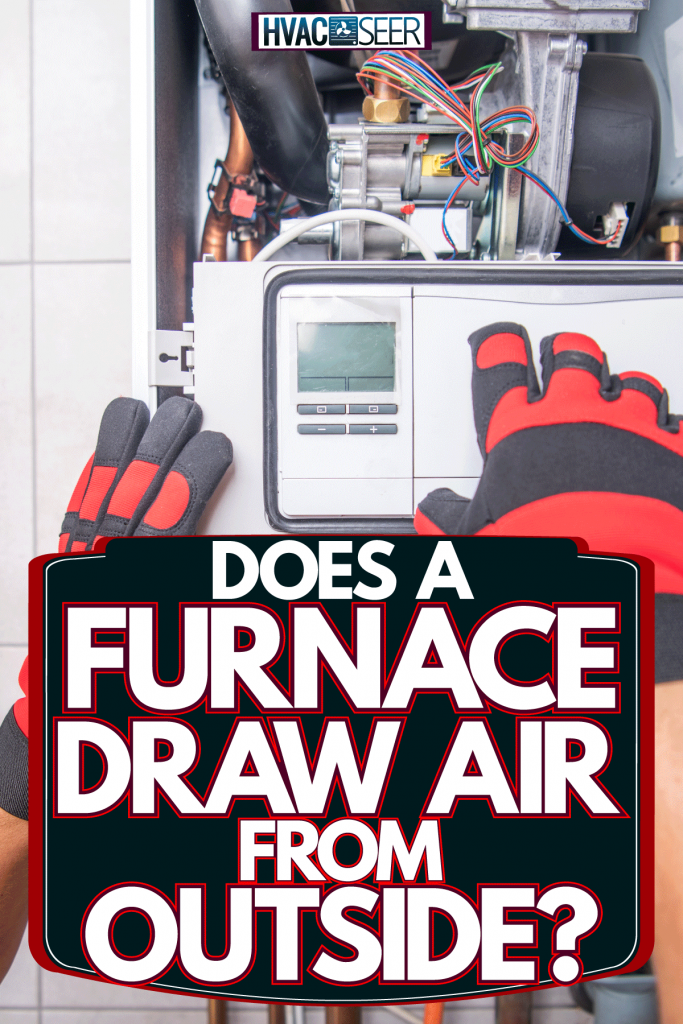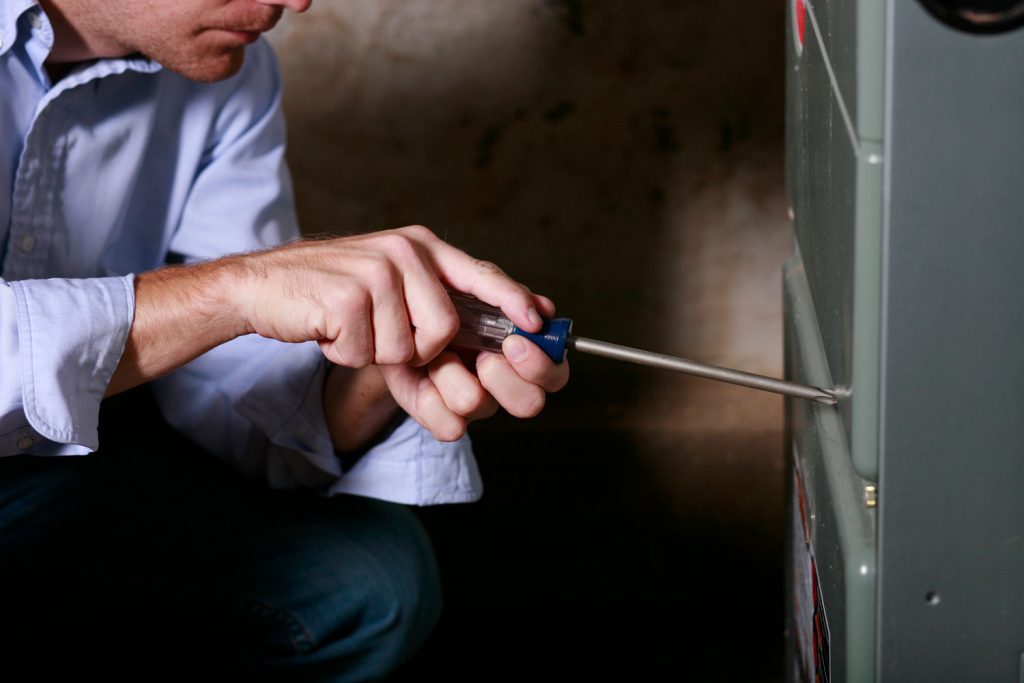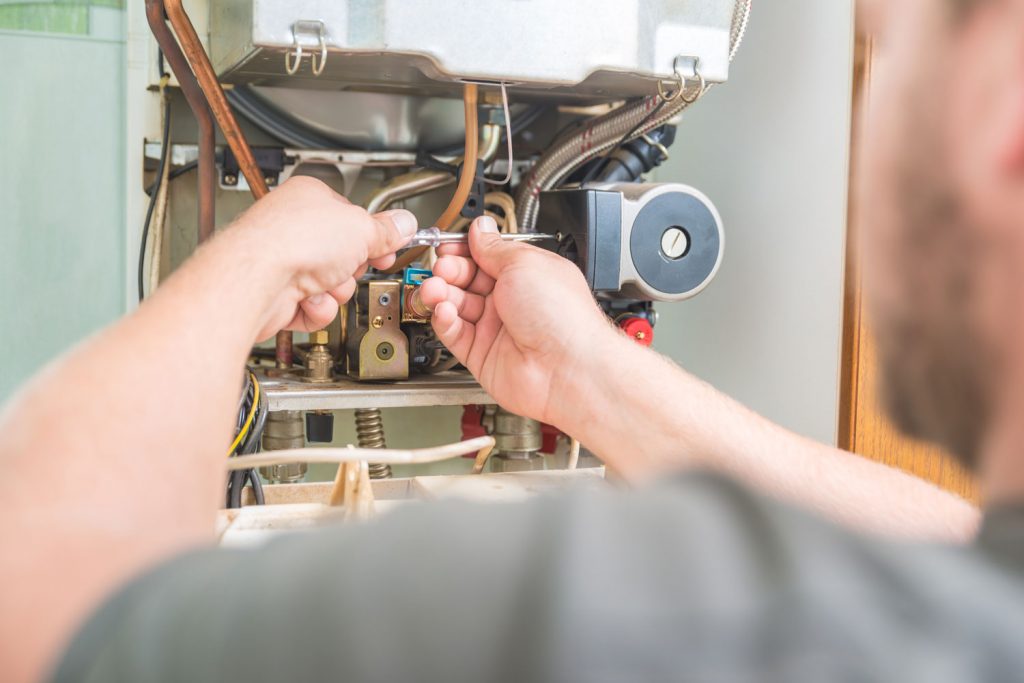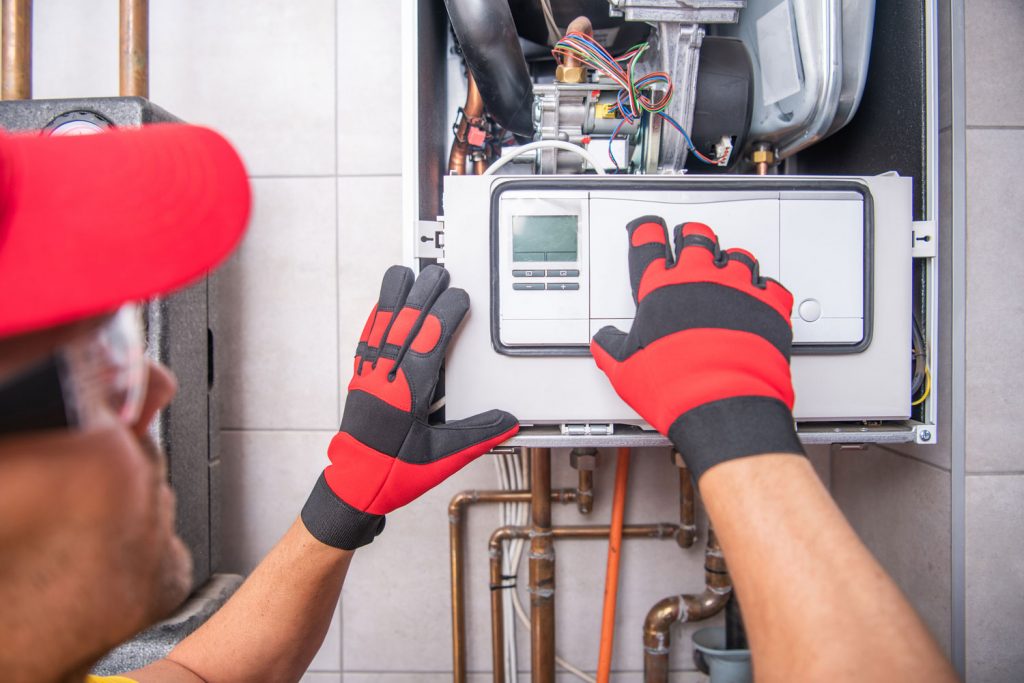A furnace heats your home by pushing warm air throughout the space. However, how does a furnace get the air that circulates in the home? Does it draw the air from outside the house? We researched and answered that question below!
Depending on what type of furnace you have will determine whether the air is drawn from inside or outside the home. High efficient furnaces draw the air from outside the home and circulate it into the house. However, older furnaces usually would draw air from inside the home and recirculate it into the home.
Like any home technology, they advance and change. Furnaces are no different, and how they work has changed over time, like where the air is drawn from to heat your home.
This article will look at how air is drawn into a furnace and distributed into a living space. In addition, we will discuss what happens if you accidentally put your furnace filter in backward, so read on!

Does A Furnace Draw Air From Outside?
A high-efficiency furnace draws air from outside the home since it is very energy efficient. If you live in an area with cold winters, this will allow your furnace to get the air it needs without using too much energy, which will help keep your energy bills low. It also reduces heat loss in winter and heat gain in summer.
In a high-efficiency furnace, the air is brought into the furnace to pass over a heating coil where it is heated. It then travels through coils to give off heat.
The hot air will rise and be pushed throughout your home's ductwork by a blower fan at the top of the furnace. In addition, this process works in reverse when the blower fan is not in use, and the hot air will travel back down to heat up for another cycle.
In other furnaces, the air is drawn from inside the house and recirculated. Then, the air needs to be passed through a heat exchanger for it to distribute heat throughout your home's ductwork.
The disadvantage of older furnaces drawing air from inside the home is that they can cause your home to be stuffy. This is because the air is not being replaced with fresh air, and you are constantly breathing in the same air. In addition, this process can also cause your furnace to work harder than it needs to, which will lead to higher energy bills.

How do I check the air intake on my furnace?
You need to check the air intake on your furnace when you change your furnace filter. The air intake is located outside and will be either at the back of your furnace or underneath your home. If the air intake is dirty, use a broom or brush to clear away debris.
Note that the air intake may be covered in dirt and leaves, but don't worry, it's nothing dangerous. Just remove them! However, there is a risk that mice can get into your air intake pipes, so check your air intake if you notice issues with your furnace.
How Do I Know if my Furance Air Intake is Bad?
The best thing to check here is to have someone take a look at it. The exhaust pipe that diverts the air into the furnace might be cracked, or there could be pieces of leaves caught in it blocking the flow. Other signs might include:
- The furnace starts to shut off, then turns back on.
- The air coming out of the vents is not warm.
- Cold spots throughout the house.
- Low airflow from your vents.
- You smell an unusual smell when your furnace is on.
- Your home feels stuffy despite having the thermostat set to a specific temperature.
- Finally, air intake vents are covered with dirt and leaves, which could signify animal activity nearby.
Therefore, make sure that you check your air intake on your furnace if you do notice any of these signs.

Does the furnace draw air from the basement?
In some furnaces, the air intake will be from inside of your home on a wall near where you have a cold water pipe. In these furnaces, the air is drawn from the basement and circulated throughout your home's ductwork.
The benefit of this type of furnace is that it allows for fresh cold air to fill in your home and make it more comfortable for you.
However, there is a risk with using a furnace that draws air from inside of your home. For example, if a door or window is left open near the cold water pipe, the air intake will suck in the exterior instead of fresh indoor air. This can be uncomfortable and lead to higher energy bills because it causes the furnace to work harder than it needs to.
What direction does air flow in a furnace?
The airflow of a furnace depends on the type of furnace. For instance, if your furnace draws its air intake from outside, then the heated air will be pushed through your ductwork to various rooms in your home.
If you have one that recirculates inside air, two coils work together to circulate warm air. Then the air enters the furnace through a heat exchanger, where it heats up.
Then, the warm air travels up to the blower fan at the top of your furnace so that it can push down into your ductwork, where it will distribute heat throughout your home.
Note that the heated air will travel back down past the heat exchanger to reheat it for another cycle in some furnaces.
What happens if the furnace filter is in backward?
If you put your furnace filter in backward, then it will not work correctly. Putting a furnace filter in the wrong way can result in high energy bills and poor air quality.
The reason is that when you have a furnace with an air intake inside, such as at the back of your furnace or underneath your home, it has to draw in outside air. Unfortunately, if you have the filter installed backward, it won't do its job since the incoming air can't go through it!

There are a few telltale signs that your furnace filter might be installed backward. One sign is if you're experiencing poor air quality in your home, despite having the thermostat set to a specific temperature.
Another sign is if you're noticing an unusual smell when your furnace is on. If you see either of these signs, then it's time to check your furnace filter to see if it's been installed incorrectly.
An easy way to check if you correctly put your filter is that the arrow on the filter will point towards your furnace's front. In addition, the filter should be facing the furnace and away from the outlet duct.

How does a furnace filter work?
A furnace filter works by trapping the particles and allergens in your home's air.
The warm air drawn into the filter will be passed into your ductwork and distributed throughout your house if you have an air intake system.
Therefore, it's essential to get a furnace filter that is the right size for your furnace so that it can do its job.
How to get the right furnace filter size
To get the right furnace filter size, you'll have to measure your existing one. You can do this by following these steps:
- Get a measuring tape for this task.
- Next, find out how wide and long is your current filter.
- If you want more effective air filtration, look for a filter that has a higher MERV rating.
- Write down the correct width and length of the filter so you can purchase one that fits your furnace.
- If need be, go to an HVAC store to see if they have any suggestions or ideas on what would work best with your furnace.
In Conclusion

Overall, if you have a newer furnace, then more than likely, the air is being drawn from outside. However, if your furnace is old, old technology may recirculate air from inside the home.
With that being said, if your furnace is over 15 years old, then it may be time to replace it anyway. This will save you money in the long run because a new furnace will be more energy efficient.
For more articles like this one, check these out:
The Best Indoor Humidity Level For Winter
